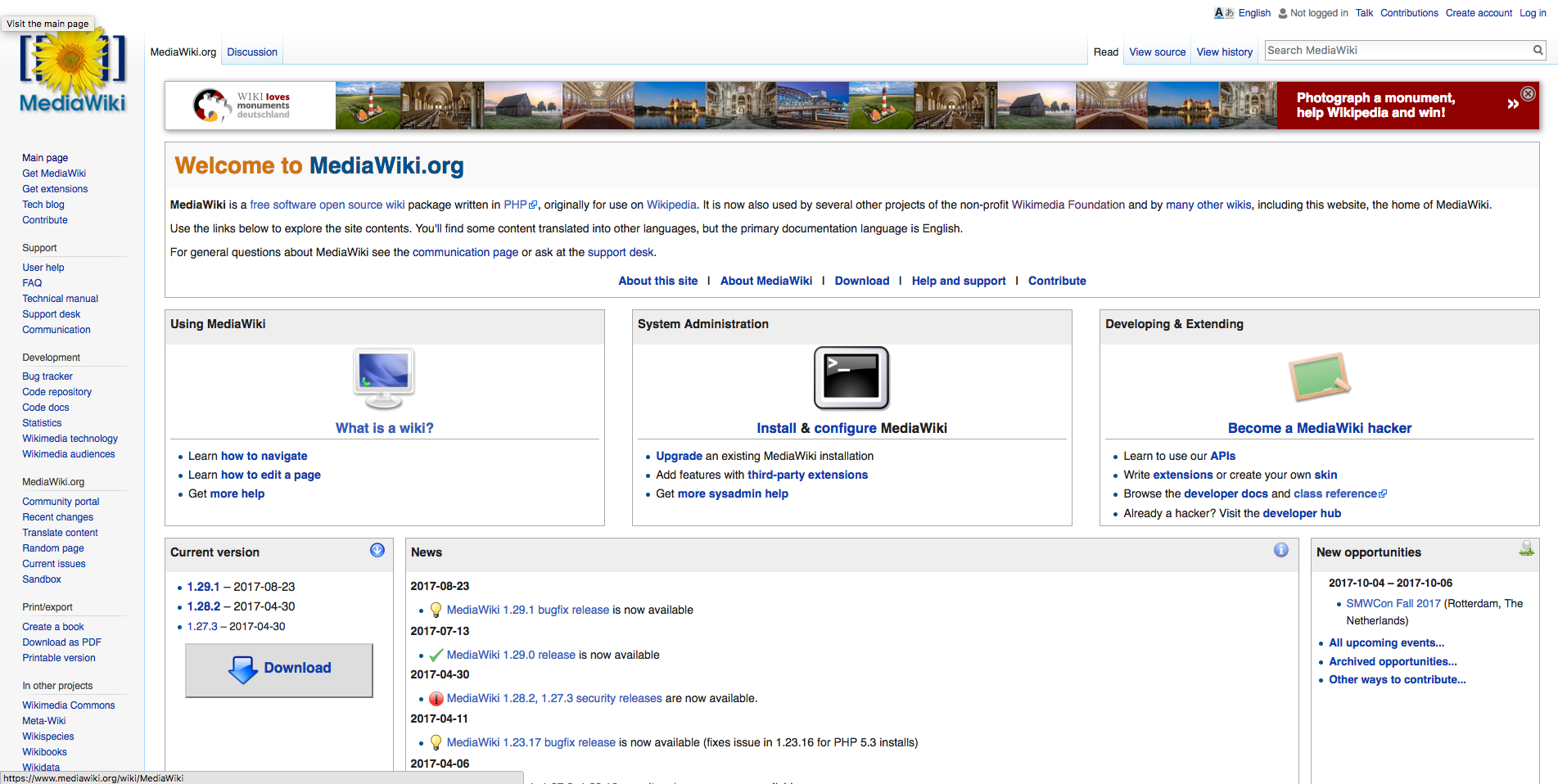
There's also a getCommonStylePath() method which does exactly the same thing, except that it uses the string "common" instead of $stylename. Note that this is not a template method, so you have to escape and print the returned URL yourself: getSkin()->getSkinStylePath( 'images/foo.png' ) ) ?>
Mediawiki skin how to#
To use it, you pass in the name of the file as a parameter, and the method automatically prepends $wgStylePath and $stylename to it (and appends $wgStyleVersion as a query string). Editing the Footer in MediaWiki: Managing passwords and usernames in MediaWiki: How to format content in MediaWiki: How to insert images into MediaWiki: Changing your URL in MediaWiki: Changing your logo in SMF 2.0: How to make basic changes to mediawiki skins: Changing a user’s password in SMF 2. Also it lacks the possibility for adaptation to.
Mediawiki skin skin#
In the file you can find the lines for the other enabled skins and put the line for the new skin there, or you can just put it at the end of the file. This is done by inserting a line with some data in the LocalSettings.php file of your MediaWiki.
Mediawiki skin install#
In my experience, this solution to a mobile skin for MediaWiki is generally viewed by users with a resigned acceptance. So after you install a skin, if you want users to be able to select it, you have to enable it. They piggy-back on the classic MediaWiki skins we all know - Vector and MonoBook. The recommended alternative, according to the release notes, is to "replace usages with the direct path to the resources." Well, the skin is called Minerva Neue, which is best used with the MobileFrontend extension. Update: As of MediaWiki 1.36, getSkinStylePath() has been deprecated. by the Vector skin, is to use the getSkinStylePath() method from the Skin class (which is the superclass of SkinTemplate it's kind of messy and tangled for historical reasons, but basically you can pretty much treat them as one class split into two files). So one way to specify an image path in your template would be something like: text('stylepath') ?>/text('stylename') ?>/images/foo.pngĪnother way, (formerly) used e.g. (This would usually be the same as the name of your skin in lower case, but it doesn't have to be it's perfectly fine to have, say, two related skins using images from the same directory.) This is also made available as a template variable, surprisingly named 'stylename'. When you subclass SkinTemplate to define your skin's main class, you are also expected to override the $stylename member variable, which specifies the subdirectory under which your skin's own stylesheets and images reside.

For a more comprehensive list of skins and information about their usage on MediaWiki-based websites, see WikiApiary (external). Yes, the SkinTemplate class, which contains the code to set up the template variables before executing the template, provides access to $wgStylePath via the 'stylepath' template variable. This category holds all 106 skins currently registered at, ordered alphabetically. The old BlenderWiki Skin has been rewritten during the Wiki 2011 Upgrade Project The page is now logically separated in.


 0 kommentar(er)
0 kommentar(er)
